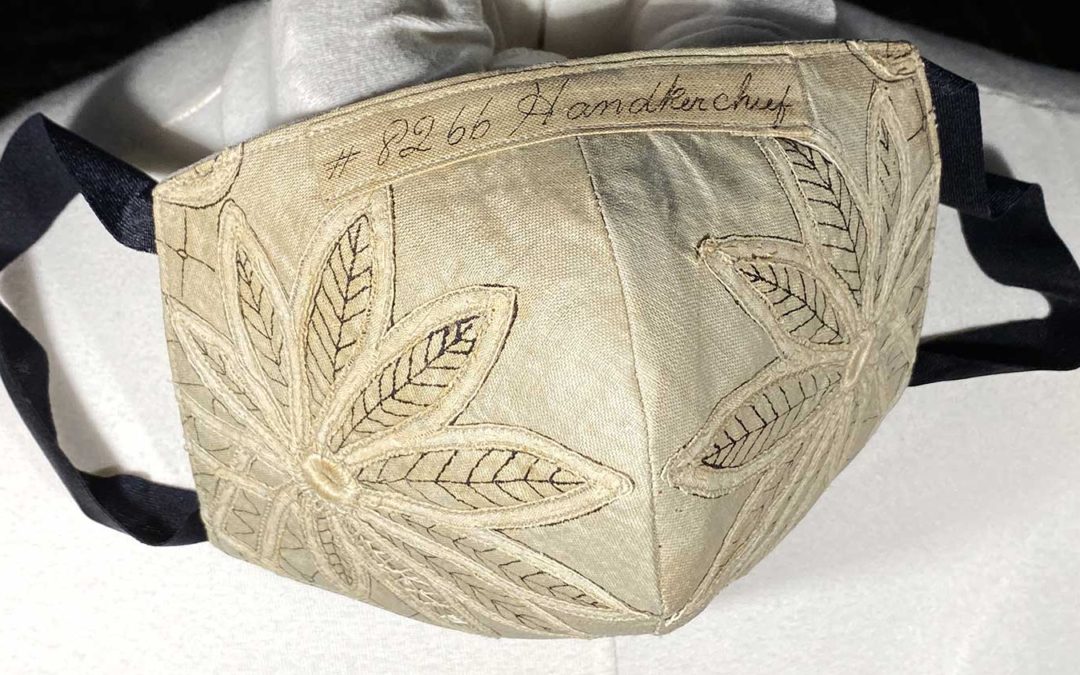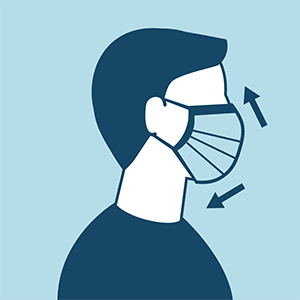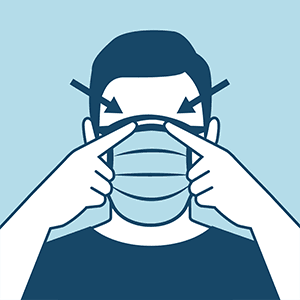Face Masks Required
As of June 26, 2020, face coverings (masks, scarves, bandanas) are required in the State of Washington when in public spaces.
For more information about the State of Washington regulations, click HERE.
As of June 26, 2020, face coverings (masks, scarves, bandanas) are required in the State of Washington when in public spaces.
For more information about the State of Washington regulations, click HERE.
Public Health – Seattle & King County Health Officer Dr. Jeff Duchin, along with King County Executive Dow Constantine and Seattle Mayor Jenny A. Durkan, announced a new Health Officer Directive strongly urging face coverings in all indoor public places including grocery stores and other businesses, as well as outside settings where maintaining six feet of social distancing is difficult. This directive will go into effect May 18, 2020.
Joined by King County Executive Dow Constantine and Seattle Mayor A. Jenny Durkan and supported by local leaders, Public Health – Seattle & King County Health Officer Dr. Jeff Duchin today issued a Health Officer Directive for the public to use face coverings to reduce the spread of COVID-19 illness.
The Directive, effective on May 18, declares that all individuals at indoor or confined outdoor public settings are strongly urged to use face coverings over their nose and mouth.
Wearing a face covering can help prevent the spread of infection to others by blocking infectious droplets from spreading when someone with the infection coughs, sneezes and speaks. Individuals can be infected and contagious before or even without developing symptoms. Evidence suggests a significant number of infections may be transmitted in this way.
Because face masks such as N95 respirators continue to be reserved for health care workers, residents should use fabric coverings such as cloth masks, scarves or bandanas. The Centers for Disease Control and Prevention (CDC) provides tips on how to make your own cloth face covering.
The Directive applies to both workers and patrons of groceries, pharmacies, big box stores, and other essential establishments, including pet supplies, auto repairs, and home improvement stores. Restaurants with carry-out and food delivery must comply as well. Face coverings do not need to be worn outside unless appropriate social distancing cannot be practiced, such as at farmers markets.
Exceptions to the Health Directive include children, people with disabilities, deaf individuals who use facial movements as part of communication, and others. Health Officer Directives are based on individual compliance by the public; there is no penalty for not wearing a face covering.
The Directive will be in effect until it is no longer needed and rescinded by Dr. Duchin.
Executive Constantine also announced that operators and riders on King County Metro will be required to wear face coverings. Metro operators will not prevent passengers without face coverings from boarding, but recorded reminders will play on Metro vehicle public address systems informing riders of the face covering policy. Security officers will communicate public health guidance to riders who are not wearing a face covering or not staying apart from other passengers.
King County is distributing 115,000 face coverings and masks through community-based organizations. The City of Seattle is working with community-based organizations to distribute over 45,000 cloth face coverings to vulnerable communities, including people experiencing homelessness, older adults, and staff at food banks. Community partners are identifying eligible people based off their existing client lists.
As of May 10, 7,046 King County residents have tested positive for COVID-19, and 498 have died due to COVID-19 illness.
The full Health Officer Directive and summary, FAQ, posters and visual materials are posted at www.kingcounty.gov/masks


A stitching art form from the 19th century, this original Battenberg Lace piece was begun, and never finished… and it’s been in my basement for 20+ years. A shame to cut it up? Perhaps. Or it could sit in my basement for another 20 years.
Imagine, this could have been sewn by someone during the 1918 pandemic! I like that we are now united (stitched together?) by having worked on the same piece (during a time of global crisis). Here’s the final mask, which I spent most of the day making, and process photos below to show you what was involved. It’s not just a mask, it’s a garment.
The outside is linen, inside is cotton, double filtration, stretch lycra ear loops. Must be hand-washed.
This Battenberg Lace Face Mask was included in a show at the Museum of Craft and Design in San Francisco, Let’s Face It, an international mask design competition. The Museum received 363 entries from 17 countries, with participants ranging from 4 years old and up. Thank you to everyone who participated. Check out the entries in the Global Community Gallery.
“The masks were wildly creative bespoke creations that employed humor, intricate craft, digital design, fashion, uncommon and recycled materials, and social and political meaning to test what a mask can be. The winners were projects that combined multiple elements of craft, form, and meaning to create masks that will provide health and safety while promoting other societal and cultural value in this time where we are at risk of losing so much of who we are. In times of distress like these, it is more important than ever for arts and cultural institutions like MCD to continue to create the space and promote ideas that can shape our collective optimism and the future. The winners of this competition are a varied and inspiring demonstration that this is our charge.” –MCD Let’s Face It jurors Marcel Wilson and JoAnn Edwards
“I was joking that on some Antiques Roadshow program fifty years from now, there will be someone with their extensive collection of hand-sewn masks from the Great Pandemic of 2020. I imagine the future expert gushing over certain examples, such as ‘I’ve never seen so many Maureen Hoffmann masks in a single collection! You can tell they’re from her by the use of vintage materials and the style of the tailoring.’
“This Battenberg Lace example is absolutely STUNNING, and would be the highlight of any Pandemic-related auction.”
C.M.
To create Battenberg Lace, preprinted linen was purchased, with the design on it, to which the person would baste fine ribbons, following along the design.
After basting the ribbons in place, hand-stitching is added in an orderly spiderweb, from ribbon edge to ribbon edge. This person only got a little of the “spiderweb” done.
I first put iron-on interfacing on the back side, to stabilize and strengthen the fabric and provide filtration for the mask. Since the ribbons were only basted on, I then had to stitch along each edge to firmly hold the ribbon in place.
I stitched around the areas that would be included on the mask. You can see the running basting stitch down the middle of the ribbons.
I made a half-pattern from TOM BIHN’s wonderful design, out of acetate, so I could see very precisely where and how the Battenberg lined up.
It was most appropriate, and so beautiful, to use the handwritten identification for the nose bridge detail.
“Maureen, I hope you realize that you are making the museum quality pieces that will represent this pandemic in the future!”
P.G.
This post is direct from the CDC web site HERE.

Cloth face coverings should—
CDC recommends wearing cloth face coverings in public settings where other social distancing measures are difficult to maintain (e.g., grocery stores and pharmacies), especially in areas of significant community-based transmission.
CDC also advises the use of simple cloth face coverings to slow the spread of the virus and help people who may have the virus and do not know it from transmitting it to others. Cloth face coverings fashioned from household items or made at home from common materials at low cost can be used as an additional, voluntary public health measure.
Cloth face coverings should not be placed on young children under age 2, anyone who has trouble breathing, or is unconscious, incapacitated or otherwise unable to remove the mask without assistance.
The cloth face coverings recommended are not surgical masks or N-95 respirators. Those are critical supplies that must continue to be reserved for healthcare workers and other medical first responders, as recommended by current CDC guidance.

Yes. They should be routinely washed depending on the frequency of use.
A washing machine should suffice in properly washing a face covering.
Individuals should be careful not to touch their eyes, nose, and mouth when removing their face covering and wash hands immediately after removing.
Recent Comments